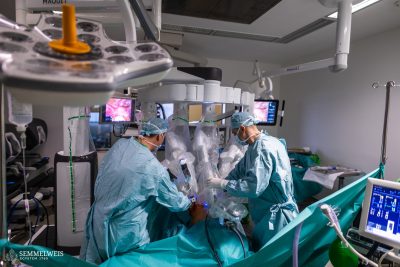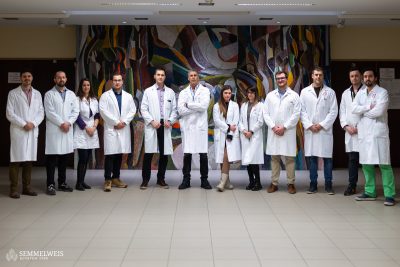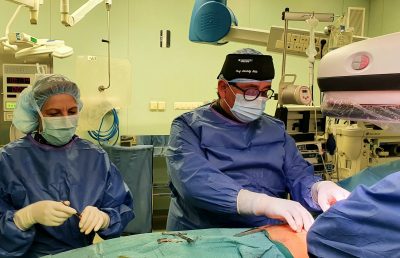The tender “Improving the efficiency of the electromagnetic tumour therapy device and the preparation for its integration into commercial use” lead by Semmelweis University received a grant of 1.472 billion forints as part of the Hungarian Competitiveness and Excellence Programme launched in 2016. The programme promotes and supports projects that contribute to the more efficient treatment of endemic diseases by R&D&I developments.
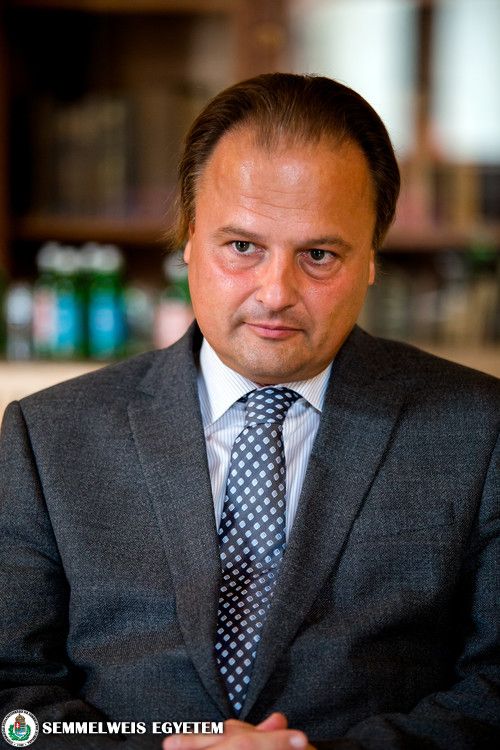 The project is realised in a consortium of Semmelweis University and Oncotherm Ltd., which has taken part in the development of oncothermia, a new therapeutic method. The method is based on the in situ radio frequency modulation of cells which triggers responses that locally inhibit tumour growth and trigger tumourspecific immune reactions by causing immunogenic cell death. As a result of immunogenic cell death the treatment applied on the primary tumour may be converted into a systemic antitumour process, which may prevent metastatisation or enable the therapeutic control of the existing metastases.
The project is realised in a consortium of Semmelweis University and Oncotherm Ltd., which has taken part in the development of oncothermia, a new therapeutic method. The method is based on the in situ radio frequency modulation of cells which triggers responses that locally inhibit tumour growth and trigger tumourspecific immune reactions by causing immunogenic cell death. As a result of immunogenic cell death the treatment applied on the primary tumour may be converted into a systemic antitumour process, which may prevent metastatisation or enable the therapeutic control of the existing metastases.
“The method is already in use in clinical practice as an adjuvant therapy. The research aims to increase the efficiency of the method.”, said Dr. Zoltán Benyó, Director of the Institute of Clinical Experimental Research and project leader.
The programme is based on preclinical and clinical studies and is completed by device development.
The preclinical module is coordinated by the Institute of Clinical Experimental Research where the local and systemic effects of the oncothermic therapy are studied on animal models and the processes behind these effects are analysed on the levels of cells, organs and the organism. The main objectives are the identification and the understanding of processes of tumour immunology and angiogenesis on a molecular level. These processes could be manipulated by oncothermic therapy, which could enable the clinical application of the method in the therapy of cancerous diseases of great prevalence and poor prognosis (eg. mammary carcinoma, melanoma, glioblastoma).
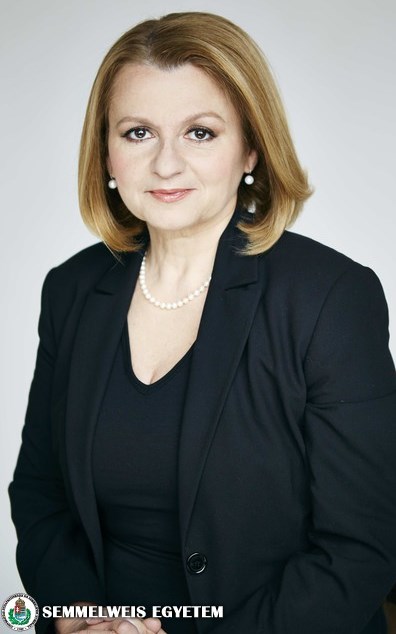 Research of the clinical module takes place in the Centre of Oncology, lead by Dr. Magdolna Dank, Director. A substantial number of patients with pancreatic cancer have already been involved in the studies and received treatment by the oncothermic device with promising preliminary results. The objective is to develop therapeutic recommendations which will serve as a basis for determining the target group and therapeutic protocol of oncothermic therapy.
Research of the clinical module takes place in the Centre of Oncology, lead by Dr. Magdolna Dank, Director. A substantial number of patients with pancreatic cancer have already been involved in the studies and received treatment by the oncothermic device with promising preliminary results. The objective is to develop therapeutic recommendations which will serve as a basis for determining the target group and therapeutic protocol of oncothermic therapy.
Based on the results gained from preclinical testing and experiences from the clinical module the industrial partner will further develop the device, thus creating a machine that satisfies real market needs. One of the greatest achievements of the cooperation is Oncotherm Ltd.’s commitment to create an international exhibition and training centre at Semmelweis University.
The programme supported by the National Research, Development and Innovation Office involves nearly 30 researchers and their assistants. The cooperation of the consortium partners is an excellent example of the realisation of research and a practical, marketable product.
Source: Institute of Clinical Experimental Research
Photo: Attila Kovács – Semmelweis University
Translation: Ágnes Raubinek
